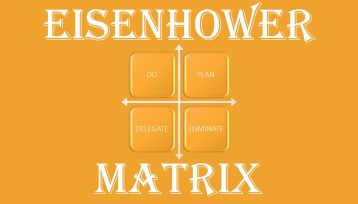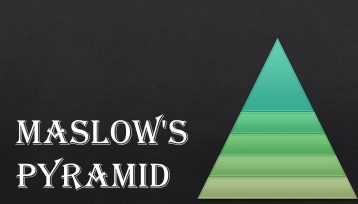Once the company has decided on a generic strategy, it is necessary to conduct an analysis of the company and its products for competitive advantage.
Competitive advantage is those characteristics of the market activity of the company that create a certain superiority over competitors. The creation of competitive advantages is associated with the development of a set of measures in the field of goods, distribution, prices, which provide superiority over similar actions of competitors.
After that, the company can decide what competitive strategies to follow.
Types of competitive strategies
- Market Leader Strategy
- Follower Strategy
- Challenger Strategy
- Nicher Strategy
Market Leader Strategy
A market leader is a company that occupies a dominant position in the market, and this is recognized by most customers and competitors of the company. Most often, the market leader is an example for competitors who either attack, imitate, or avoid it.

At the disposal of the market leader is the largest number of strategic techniques, because it controls the market and imposes its conditions on them. The main risk of this strategy is that the leader is forced to spray its resources to maintain leadership and repel the attacks of competitors.
Market leaders can rely on these strategies
Market expansion
An increase in total demand for goods can become a market leader strategy since, in the event of an increase in consumption, the leading company will win first of all.
Market Expansion Methods
- Attracting new consumers. The expansion of the market through the sale of goods to people who did not have information about the properties of the goods, could not purchase the goods because of the high prices for it, did not want to buy a product which characteristics did not fully satisfy the needs.
- New ways to use the product. Market expansion through the discovery and promotion of new ways to use the product.
- Increase the intensity of use of the product. Market expansion by increasing the intensity of consumption of goods.
Protecting Market Share
As sales volumes grow, the importance of protecting one’s market share grows, because companies appear that can cause significant losses to the leader. The goal of defensive strategies is to reduce the likelihood of attacks by competitors and reduce the intensity of a possible attack.
Market share protection methods
- Positional defense. It is based on the protection of existing markets of the company from the encroachment of competitors. It has an obvious drawback – the possibility of attack by substitute goods.
- Flank protection. It implies the creation in the assortment range of the company of such goods that would contribute to restricting the entry of substitute goods or goods oriented to unoccupied niches on the market.
- Preemptive strikes. It is based on constant attacks against competitors conducted in minor commodity-geographical markets. Such a strategy allows destabilizing the work of competing companies, reducing their ability to concentrate efforts in the areas most vulnerable to the company.
- Counterattack. It consists of conducting a massive response in the most vulnerable areas for the competitor, during the counterattack any of the attacking strategies can be used. In the course of counterattacks, the leader’s advantages associated with the presence of strategic reserves that can be used to repel the attack are used.
- Mobile protection. It is based on product and geographical diversification, which allows to increase the depth of defense and increase the stability of the company.
- Forced contraction. It is aimed at leaving markets that are impossible and inexpedient to defend, and focusing efforts on promising areas.
Increase market share
According to the results of economic studies, in most industries, an increase in market share leads to a significant increase in the profitability of companies. Intensification of competition has led to the fact that real managers have become increasingly interested in models of real combat operations, therefore, the interpretation of marketing defense strategies has a significant military interpretation.
When implementing the Increase Market Share strategy, offensive strategy options are used to increase the company’s influence in the occupied markets. The growth of market share may face a number of restrictions: antitrust laws, the presence of unattractive segments and niches, the excess of marketing expenses over income from growth in market share. In most cases, it is more reasonable to increase the size of the market and increase sales while maintaining a stable share.
Follower Strategy
The basis of the Follower Strategy is an adaptive behavior, consistent with the actions of competitors and the desire to dominate over costs. Such a strategy involves peaceful coexistence and a deliberate division of the market. You chose it when the possibilities of differentiation are small, and the price struggle leads eventually to losses for all competitors.
Many companies prefer to follow in the wake of market leaders, but the latter are very jealous of their attempts to lure customers. If the follower offers low prices, high-quality services, or an improved product, the leader has the opportunity to instantly take adequate steps.

Practically the leader surpasses the followers in all types of competition. Since the fight, which is most likely to lead to a weakening of both companies to the joy of competitors, the follower must consider everything very carefully before attacking.
If the follower is unable to deliver a preemptive strike in the form of a new product or a sharp expansion of the distribution system, it should hold onto the leader without trying to attack them.
Followers can rely on these strategies
Copycat
Duplicates the leader’s product and packaging, selling goods on the black market or dubious intermediaries.
Double
It copies products, a distribution system, a competitor’s advertising campaign, for example, a slightly modified brand name.
Simulator
Something copies from the leader, but retains differences in packaging, advertising, prices, etc. Its policy does not concern the leader until the simulator takes aggressive attacks, moreover, the simulator helps the leader avoid a complete monopoly in the industry.
Adaptive
It usually modifies or improves leader products. Usually, it starts from some other markets, in order to avoid a direct collision with the leader, very often an opportunist becomes a contender.
Next week I will share with you the remaining competitive strategies – Challenger Strategy and Nicher Strategy. Till then you can find more strategic marketing information in Marketing Strategy section.




